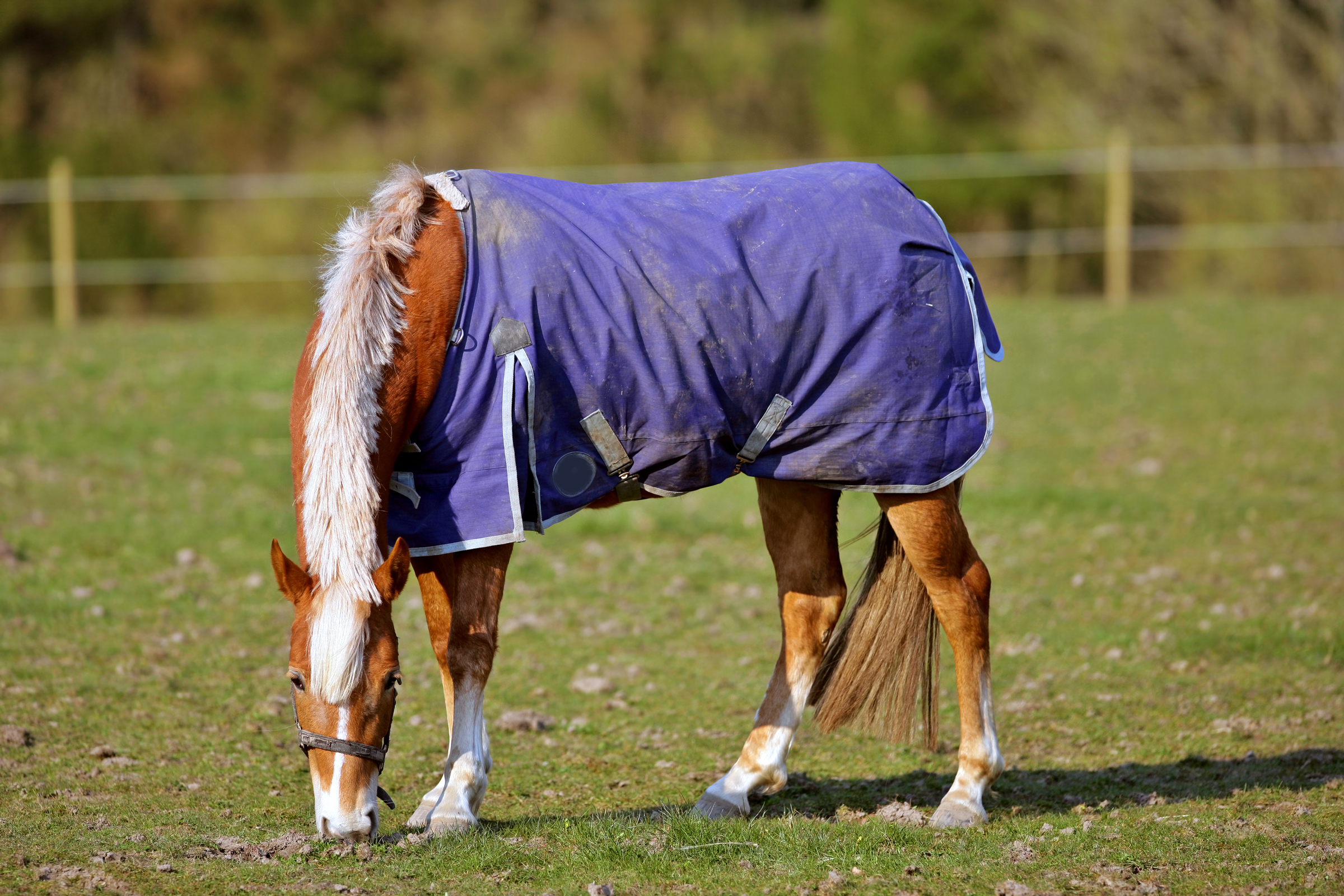
After months of blanketing in much of the U.S., some horses might have developed blanket rubs. It can be frustrating to uncover your horse and see a big bald patch staring back at you. Luckily, there are ways to help prevent and treat blanket rubs.
Why Do Horses Get Blanket Rubs?
“I believe the number one cause of blanket rubs are improperly fitted blankets and materials, or poorly placed seams on a horse’s shoulders,” says Rosemary Root, barn owner and manager at New Horizons Farm in Essex, Vermont for over 35 years.
Both clipped and unclipped horses can get blanket rubs if the blanket is not properly fitted and adjusted. In addition, clipped horses tend to go bald in the rubbed area faster than unclipped horses.
“I always use bottom snaps (on the front of the blanket), and they should always face inward, as should all the snaps on any blanket looser than top buckle snap (on the front of the blanket),” Root explains. “This gives more freedom from blanket movement. The blanket should be adjusted so the pull of the blanket (main point where the blanket pulls back against the horse when they walk) is above the point of the shoulder, taking pressure off the shoulder. If the blanket material is smooth, it will be less likely to grate against the hair.”
Checking where the seams rest on your horse is a good way to evaluate the potential for rubs. “Some land right on the point of shoulder causing the possibility of a rub,” says Root. “The blanket should fit so the binding is not on top of or behind the withers.”
Just like human clothing, sometimes sizing can vary from brand to brand or even blanket type. “Not every brand of size 80 will fit every size 80 horse. Some are too large or small in the neck. The adjustable Velcro tabs may not always adjust for your horse either,” Root says.
Treating Blanket Rubs
If there is something not quite right about the fit or size of the blanket, a good way to stop the rubbing until you can get one that is properly fitted is to put another layer under the ill-fitted blanket.
“I have always put nylon sheets under blankets because they slide more to help prevent rubs, and they are easier to wash, too,” Root says. She also recommends using a coat conditioner on areas prone to rubbing so the blanket glides over them easily. “In years past, I have seen folks use shoulder guards without much success, so I find the sheets are easier and work better.”
Finding a Blanket That Fits
If you’re dealing with blanket rubs and you have other horses in the barn that wear blankets of a similar size, you might try switching blankets to see if there’s a better fit. This could save you time and money trying to see what brand and size fits the best.
“Also ask about breed fit and go to blanket manufacturing web sites,” says Root. “Some of the sites are very helpful with the size, shape, weight, and breed you are needing to fit.”


